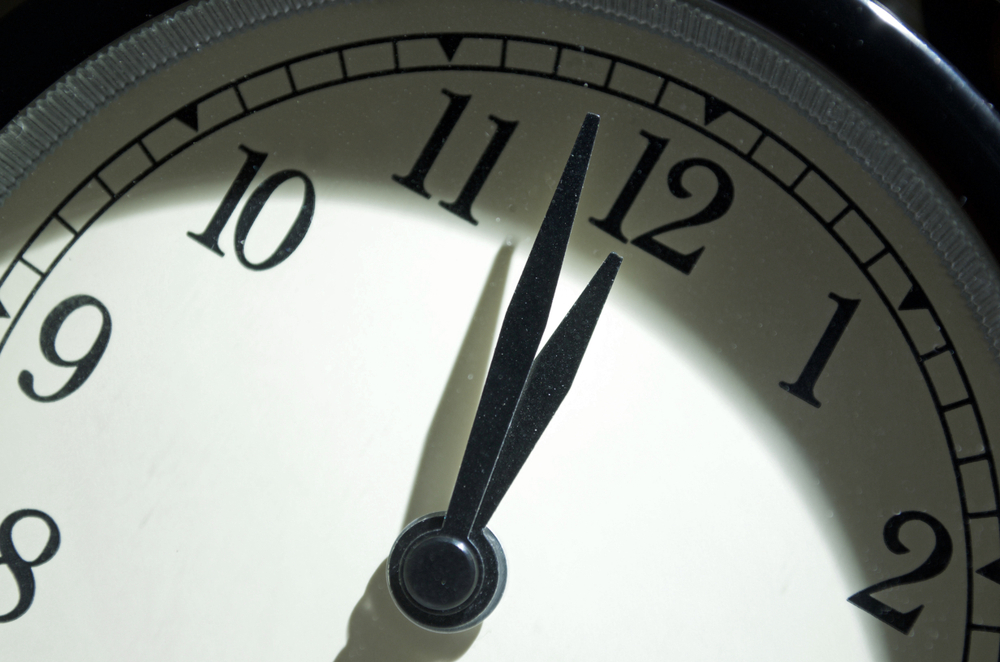Ever wondered why a minute is made up of 60 seconds? Well, it all goes back to the ancient Greeks and their affinity for the Babylonian base-60 system.
However, the Greek astronomers, in their quest to simplify the division of 24 hours, adopted the Babylonians’ base-60 system for astronomical calculations. This led to the convenient subdivision of an hour into 60 minutes and each minute into 60 seconds.
As for the Babylonians, their fondness for the number 60 likely stemmed from its mathematical versatility. It is the smallest number divisible by the first six counting numbers and by 10, 12, 15, 20, and 30. This made it a practical choice for fractional calculations, influencing not only time measurement but also the division of degrees in geometry—hence, a circle having 360 degrees.
Thus, you can give credit to the ancient Greeks and Babylonians for their mathematical inventiveness the next time you consider the 60-second minute, as their system continues to influence our daily perception of time.
The Origins of Minutes

A long time ago, about 3,000 years ago, people in Egypt and Babylon, who are like our very old relatives, were trying to figure out time. They looked at the moon and saw it takes about 29 and a half days to do its moon thing. So, they made months based on that. They also watched the sky and saw that a year is about 365 days.
Moreover, around 2800 BC, they divided the year into three seasons, each with four months. Each month had three weeks with ten days each, but later they changed it to seven days in a week. Maybe they did this so workers could rest more on the last day of the week, and also for religious reasons.
Now, these people in Babylon and Greece really liked circles. They divided a circle into 360 degrees, which is like having 12 sets of 30. At the same time, around 200 BC, the Egyptians decided to divide the day into 12 hours of daylight and 12 of nighttime. This seemed like a good idea because there were already 12 months in a year. This meant that in summer, an hour of daylight was longer than in winter, and the same goes for nighttime.
Here’s the fun part: back then, they didn’t have our regular 60-second minutes and 60-minute hours. Minutes and seconds were kind of random. So, it wasn’t like now where 60 seconds make a minute and 60 minutes make an hour. They were still figuring things out!
So, these ancient people had different ways of looking at time, all based on what they saw in the sky and the seasons. It’s a bit like a puzzle, and they were putting the pieces together to make sense of their days.
Standardization of Time
| Period | Key Developments |
| Historical Background | – Emergence of the need for standardized time as societies evolved and communication expanded. |
| – Early decentralized timekeeping based on natural cues like the sun’s position. | |
| Introduction of Time Zones | – 19th-century recognition of the need for synchronized time due to railroads and telegraphs. |
| – Proposal by Sir Sandford Fleming for 24 time zones, each one hour apart, at the International Meridian Conference in 1884. | |
| Greenwich Mean Time (GMT) | – Establishment of GMT as the standard reference for time at the Royal Observatory in Greenwich, London. |
| – GMT as the baseline for the world’s time zones, with local times calibrated accordingly. | |
| Coordinated Universal Time (UTC) | – Introduction of atomic clock technology for more precise time measurement. |
| – 1963 adoption of UTC, based on International Atomic Time (TAI), as the global standard for timekeeping. | |
| Leap Seconds | – Introduction to account for irregularities in Earth’s rotation and maintain alignment between atomic and astronomical time. |
| – International agreements governing the addition or subtraction of leap seconds. | |
| Global Timekeeping Organizations | – Roles of organizations like BIPM and ITU in coordinating global time standards. |
| – BIPM overseeing the International System of Units, including time-related standards. | |
| Technological Impact | – Crucial role of precise timekeeping in satellite navigation, telecommunications, financial transactions, and scientific research. |
| – Dependency of the Global Positioning System (GPS) on accurate time synchronization. | |
| Challenges and Future Developments | – Ongoing efforts to address synchronization challenges with increasing reliance on digital technologies. |
| – Discussions exploring the potential redefinition of the second and other fundamental units to enhance precision. |
Cultural and Historical Significance
Cultural and historical significance has imbued the concept of time with layers of meaning and practices across diverse societies. Here’s an exploration of how time carries cultural and historical weight:
- Rituals and Festivals:
- Many cultures have specific rituals and festivals linked to particular times of the year, often based on astronomical events.
- Solstices and equinoxes, for example, mark crucial points in some cultural calendars and are celebrated with ceremonies and festivities.
- Religious Observances:
- Various religious traditions incorporate specific times for prayer, worship, or fasting.
- The concept of sacred time is central to religious calendars, influencing daily, weekly, and annual practices.
- Cultural Calendars:
- Different cultures have their own calendars, often based on lunar or solar cycles, influencing how time is organized.
- Traditional calendars often reflect cultural values, agricultural practices, or historical events.
- Seasonal Connections:
- Many cultural practices are intimately tied to the seasons, influencing agriculture, clothing, and daily routines.
- Seasonal markers often play a role in cultural narratives and folklore.
- Historical Epochs:
- Historical events and epochs are often marked by specific dates, creating milestones in collective memory.
- Anniversaries of significant events are commemorated, reflecting their enduring impact on culture.
- Cultural Notions of Time:
- Some view time as cyclical, emphasizing the repetition of events and seasons.
- Others adopt a linear perspective, viewing time as a continuous progression with a past, present, and future.
- Language and Expressions:
- Expressions related to time often carry cultural nuances and reflect societal values.
- Cultural idioms, proverbs, or sayings may convey attitudes towards time, punctuality, and patience.
- Temporal Arts and Literature:
- Artistic expressions, including literature, music, and visual arts, often explore and interpret the passage of time.
- Historical narratives, myths, and storytelling shape cultural identities and perceptions of time.
- Influence on Social Structures:
- Cultural views on time can influence societal structures, including expectations of punctuality, work ethic, and leisure.
- Temporal norms contribute to the rhythm and dynamics of daily life within a culture.
- Interplay with Technology:
- Advancements in technology, while offering new ways to measure time, also influence cultural practices and perceptions.
- The pace of technological change can impact cultural attitudes toward time.
Scientific Basis

| Scientific Foundation of Time Measurement | Key Elements and Developments |
| Celestial Motions | – Earth’s rotation on its axis defines the day-night cycle, while its orbit around the sun establishes the concept of a year. |
| – Fundamental celestial motions used as a basis for time measurement. | |
| Atomic Clocks | – Atomic clocks, utilizing atom vibrations (usually cesium or rubidium), provide exceptional accuracy in timekeeping. |
| – The second, defined by the International System of Units (SI), is based on the vibrations of cesium atoms. | |
| Coordinated Universal Time (UTC) | – UTC combines International Atomic Time (TAI) with leap seconds to account for variations in Earth’s rotation. |
| – Atomic time, measured by atomic clocks, is more stable and precise than previous methods based on celestial observations. | |
| Ephemeris Time | – Ephemeris Time (ET), based on Earth’s orbital motion, historically significant but largely replaced by atomic time. |
| Relativity | – Einstein’s theory of relativity introduces time dilation, impacting the perceived passage of time in high-speed or strong gravitational field scenarios. |
| Lunar and Solar Phenomena | – Lunar cycles (synodic month) and solar phenomena (solstices, equinoxes) historically significant for calendar systems. |
| – Contribute to understanding seasons and the organization of longer time intervals. | |
| International Collaboration | – Organizations like BIPM maintain international standards for time measurement. |
| – Global cooperation ensures consistency in timekeeping across countries and disciplines. | |
| Technological Advancements | – Satellite-based systems like GPS rely on precise time measurements for accurate positioning and synchronization. |
| – Crucial role of time synchronization in scientific experiments, telecommunications, and various technological applications. |
FAQ’s
Q: Why is there 60 seconds in a minute?
A: The Babylonians, inheriting the sexagesimal system from the Sumerians, chose 60 for its mathematical convenience, being the smallest number divisible by the first six counting numbers.
Q: Why is the day divided into 24 hours?
A: The Egyptians established a 24-hour day, dividing it into 12 hours of daylight and 12 of night, based on the appearance of stars as the night progressed.
Q: Why is a minute called a minute?
A: The term “minute” originates from the Latin “pars minuta prima,” meaning “first small part,” refining further with a “second small part” (Latin: pars minuta secunda).
Q: Why not 100 seconds?
A: Blame the Babylonians, who invented the 360-degree circle, 12-hour days, and the division into 60 minutes, driven by their use of fractions instead of decimals.
Q: Who decided on 24 hours in a day?
A: The ancient Egyptians, during the New Kingdom (1550-1070 BCE), are credited with originating the 24-hour day, using 24 stars to mark the night’s passage.
Q: Why is 1 second a second?
A: The second is defined by the caesium frequency (∆ν), the unperturbed ground-state hyperfine transition frequency of caesium 133, set at 9,192,631,770 Hz.
Q: Why is an hour not 100 minutes?
A: The division of hours and minutes into 60 units each comes from the Babylonians, who used a sexagesimal system in mathematics and astronomy, derived from the Sumerians.
Final Words
The reason a minute has 60 seconds goes back a long time to ancient Babylonians and Greeks. They liked the number 60 because it was easy to work with mathematically. They used it to divide the day into 12 hours and each hour into 60 minutes. This tradition stuck around, and now we have 60 seconds in a minute.
Furthermore, it’s a mix of ancient math, observations of the sky, and how people organized their calendars. Thus, you can give appreciation to our ancient friends from Babylon and Greece when you see a clock ticking away because they made keeping track of time simple!

